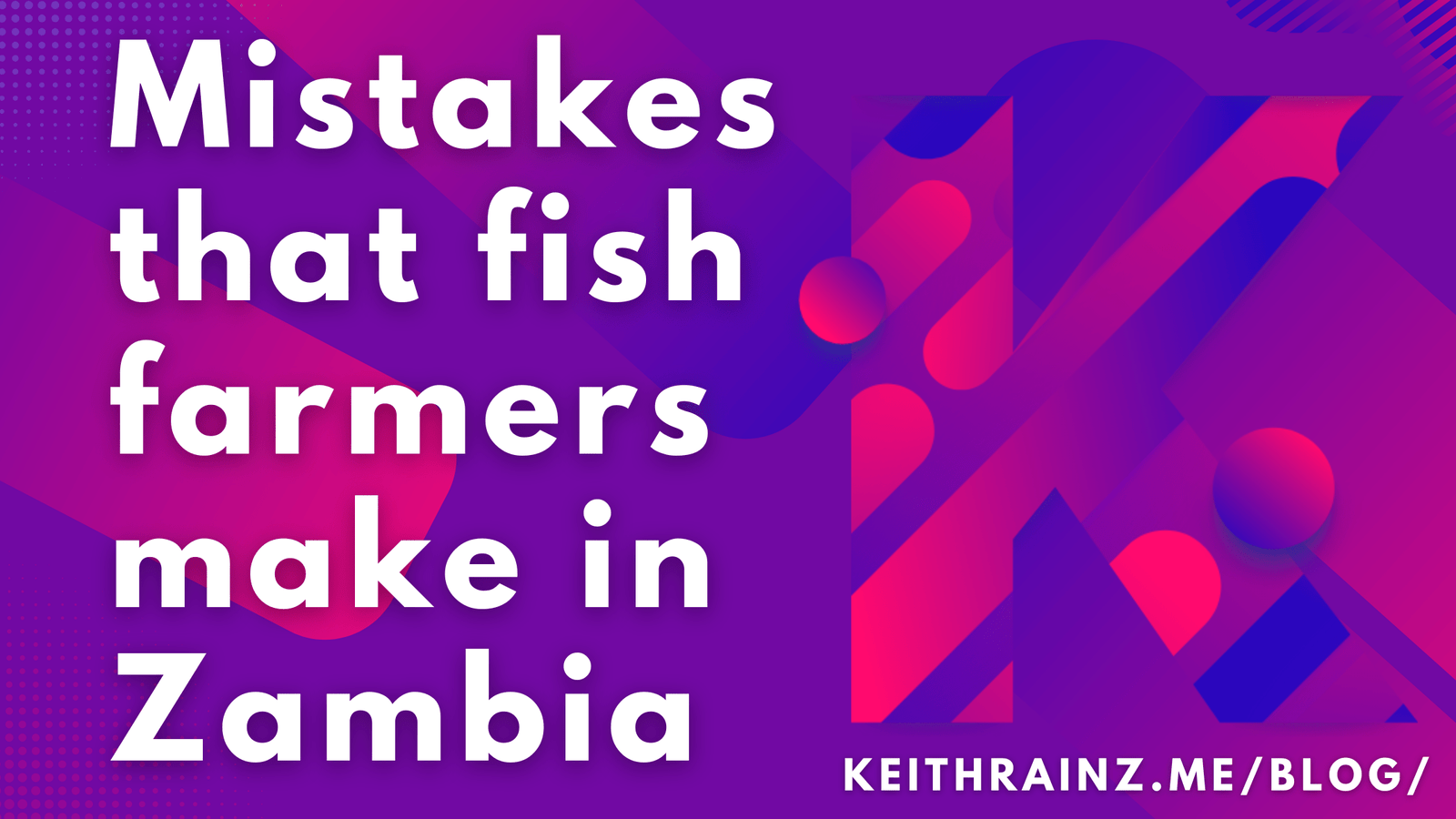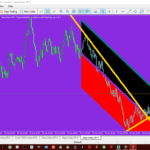Fish farming has been one of Zambia’s most profitable businesses, despite the fact that it was not discovered until recently.
The following article discusses the faults that limit the profitability of a fish farming business and how to avoid them.
11 Mistakes that fish farmers make in Zambia
- STORING AN EXCESSIVE AMOUNT OF FISH
The most typical mistake committed by new (and not-so-new) fish farmers is to overstock the tank, cage, or pond. We push the restrictions a little because we want to develop as many fish as possible and maximize the return on our investment. As the filters struggle, oxygen levels are impaired, resulting in lower growth, a poor FCR (feed conversion ratio), and excessive N-compounds.
The takeaway: Determine the right stocking density for your farm’s infrastructure and avoid the temptation to overstock. - IMPROPER HARVESTING
During the warm months, you may stock and feed intensively, which is fine, but you may not collect enough fish to keep the total weight of fish present below 1,000 pounds per surface acre. The conditions are in place for oxygen depletion to occur. It’s definitely past time for a fish fry when you start identifying and naming individual fish as they come up to feed! - AN INSUFFICIENT NUMBER OF TANKS AND FILTERS
To remove suspended and settleable materials from flowing water, adequate mechanical filtration is required, and the biological filter must be large and efficient enough to convert all ammonia to nitrite and all nitrite to nitrate. Water quality will suffer as a result of either side’s failure, as will growth, FCR, and disease susceptibility. - AN EXCESS OF WEEDS
It’s all too tempting to believe there’s “scum,” “moss,” and everything else is a “weed.” Herbicides and triploid grass carp, on the other hand, aren’t inexpensive, so be sure you know what plants you need to manage so you can pick the most effective techniques. Many pond owners squander a lot of money each year by guessing which weed species they wish to get rid of.
True, appropriate fertilization increases phytoplankton and gives the water a greenish tinge, which can block out sunlight and prevent submerged weeds from germinating. If the vegetation is already growing when you fertilize, it will effectively compete for the nutrients in the fertilizer, potentially leading to an increase in the population of healthy weeds. - INSUFFICIENT WATER FLOW
Another common blunder in fish farming is having a too slow exchange rate. Circulation and exchange rate are two related notions that are relevant in this context. Circulation refers to the speed at which water moves around inside a tank, and it usually refers to a circular tank with water going around inside it. This is critical because it keeps solid wastes suspended until they depart via the central bottom drain, ensuring that the tank remains relatively clean at all times. Larger fish tolerate faster circulation better than smaller fish of the same species, resulting in more efficient cleaning.
The exchange rate is a computation that compares the volume of the tank to the volume of water coming into the tank every hour. This is a crucial calculation because it dilutes the dissolved organics by replenishing the water on a frequent basis. We’ve seen that a 1 tank volume per hour exchange rate is a decent starting point, but it must be adjusted for a variety of factors, including fish density, species, and age. - FAILURE TO GET YOUR PH AND TOTAL ALKALINITY TESTED.
This only applies to pond owners who have ponds on acidic soils. Regardless of how much your pond cost to create or how much you spend on your fish, low pH and alkalinity will stifle fish production. Have a water sample evaluated and, if necessary, apply agricultural limestone. - INSUFFICIENT AERATION
This is related to the last point; if there are too many fish in the tank compared to the rate of oxygen replacement, oxygen levels will decline, affecting the pace of growth of the fish, feed efficiency, and disease vulnerability. Furthermore, if there is insufficient oxygen (4mg/l), the biofilter bacteria will be unable to convert ammonia to nitrate efficiently.
The takeaway: Make sure there’s enough aeration for the fish and biofilter to perform properly. - BUYING WILD FISH FOR YOUR POND
Many pond owners choose to stock their ponds with fish from another pond or reservoir as a supplement. This frequently leads to an imbalance in the populations of forage and sportfish, which can result in poor fishing. Furthermore, you never know if the wild fish you’re bringing in are infected with a sickness or parasite. Stick to forage and farm-raised sport fish. In the long run, you will not be sorry. - IMPLICIT GENETICS
Tilapia is a very easy fish to breed, hence tilapia growers are the ones that are most to blame. When your infrastructure is ready to receive fish, the temptation to catch the first fish you see is strong because you want to get started farming. The most readily available fish, on the other hand, are frequently inbred and of little economic worth. These fish grow at a slower rate and have a lower yield (fillet to body ratio) than commercial strains.
The math is straightforward:
Compare the number of fish you can produce in five years from your ponds if you employ a strain that takes five months to reach market mass with a strain that takes seven months.
The takeaway:
Be patient and look for the best fingerlings you can in terms of growth rate and yield. - FAILURE TO MANAGE THE LIVESTOCK
We found that beginners frequently plan to put fish in their systems in Month 1, leave them there until they reach harvest size, and then harvest them for the first time. This strategy is inefficient for several reasons, including failing to provide an opportunity to remove slow-growing fish, underutilizing infrastructure in the early months, fish may not feed well at first due to low-density vulnerability stress, and failing to group fish according to size, resulting in marketing issues.
It’s much better to keep the fingerlings in a tiny container for a short time – usually 1 or 2 months. They are then harvested, sorted by size, the sluggish growers are removed, and the rest are replenished into a larger pond at a lower number per cubic meter for another 1 or 2 months before harvesting, sorting, and restocking.
The lesson: Make a plan for stocking, harvesting, size sorting, and restocking the tanks, cages, or ponds, and then stick to it.
FAILURE TO KEEP RECORDS OF HARVEST
If you don’t know what you have, how will you know what to harvest? To determine the size structures of the species in the pond, you must go fishing and collect catch records. Using Percentage Size Distribution and Relative Weight, you can keep track of which fish should be harvested and how many. The nicest part about harvest records is that they’re free! - IMPROPER FEEDING
The feed is the source of energy that allows the fish to grow. If you feed your fish too little, they may have great genetics and good water quality, but they won’t be able to grow since they won’t have the energy to do so. Similarly, if you feed too much, the fish will be unable to consume all of the food, leading in waste, water contamination, and growth compromise. As a result, feeding the correct amount of feed is critical.
The quality of the feed is also critical. In our hatchery, we’ve seen that superior quality feed results in less size differentiation, much larger fish, higher survival, and better water quality than lesser quality feed in nearby tanks.
IN CONCLUSION, the following are the Mistakes that Affect Fish Farming Profitability:
STOCKING YOUR POND WITH WILD FISH USING POOR GENETICS NOT MANAGING THE LIVESTOCK FAILING TO KEEP HARVEST RECORDS FEEDING INAPPROPRIATELY TOO MANY TANKS; TOO FEW FILTERS TOO MANY WEEDS TOO LITTLE WATER FLOW FAILING TO HAVE PH AND TOTAL ALKALINITY TESTED TOO LITTLE AER







